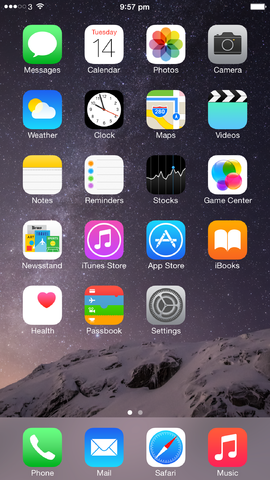iOS 1, 2007
Steve Jobs described Apple iPhone back in 2007. He pointed out the problem with using pointing devices when humans already have built in pointing devices – fingers. From thereon, people were happy to tap, flick, and wave with their phones’ browsing messages and other forms of content.
iOS 2, 2008
The average Apple users have not fully understood all the features embedded in iOS 1 but Steve Jobs released a new version through the iOS 2 just five months after the older version was released. The evolution further expanded by releasing an SDK (software development kit) to third party creators which allowed them to create applications for Apple gadgets. It was during this time that the Apple store was created.
iOS 3, 2009
In this version, more updates were embedded, especially those that were demanded by Apple customers such as landscape keyboard, MMS messaging, cut and paste functions, video recording, and voice control and recording. Apple users were really delighted with the development and looked forward for an upgrade on iOS. In 2010, Apple introduced the iPad.
iOS 4, 2010
Apple loyal customers were very excited when this version finally got to see the light of day during the summer of 2010. Users were happy to play around with the advanced and improved features like real time video calling, multi-browser for applications, spell check, folders to arrange apps, and the launching of iBooks.
iOS 5, 2011
Although there was no perceived technological revolution made in this version, it did manage users to acclimatise with the new features by improving the way iOS owners use their Apple devices – such as computer free set up of iOS and updates. It is also in this version that SIRI was introduced; the virtual assistant that lives inside Apple devices. Steve Jobs claimed that they introduced 200 additional features in this version through apps, messaging, and notifications applications for example.
iOS 6, 2012
In this evolution of the iOS, Apple customers were recipients of additional 200 features that includes more user friendly Facebook integration, LTE (long term evolution – which is basically 4G) support, Apple Maps, and an improved SIRI.
iOS 7, 2013
Launched in June of 2013, this version encouraged peer to peer sharing of media, the control center was created, and of course a new design was introduced, creating more sleek and stylish appearance of the whole operating system.
iOS 8, 2014
The most significant technological revolution iOS 8 has is the introduction of Apple Pay; a payment system where users no longer need to swipe their credit cards.
With these evolutions, the tech pundits are always trying to predict what new advancements Apple will come up with next in iOS9 (release announcement due in June 2015), but whatever it is, I’m sure it will be worth the wait.



Recent Comments